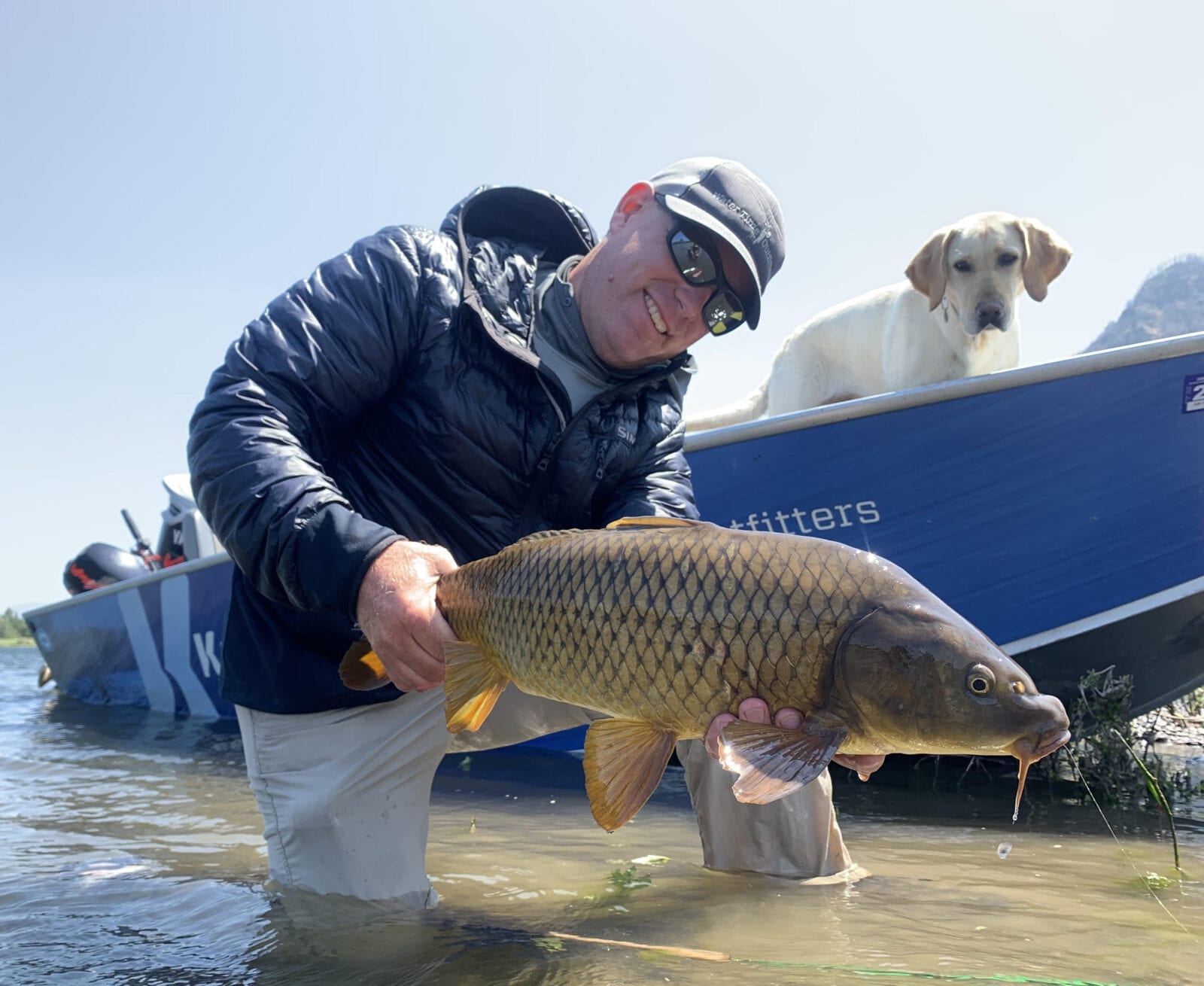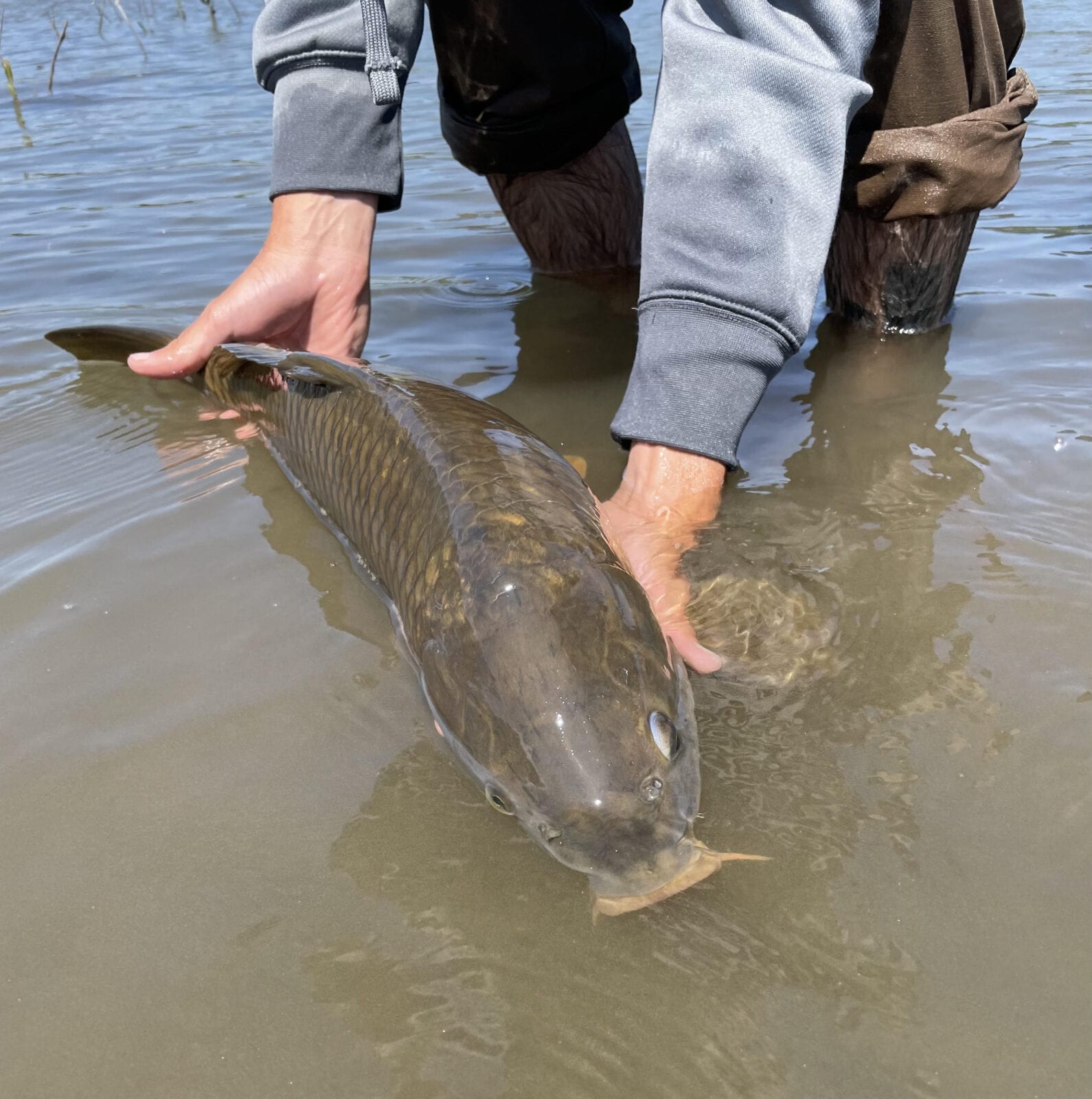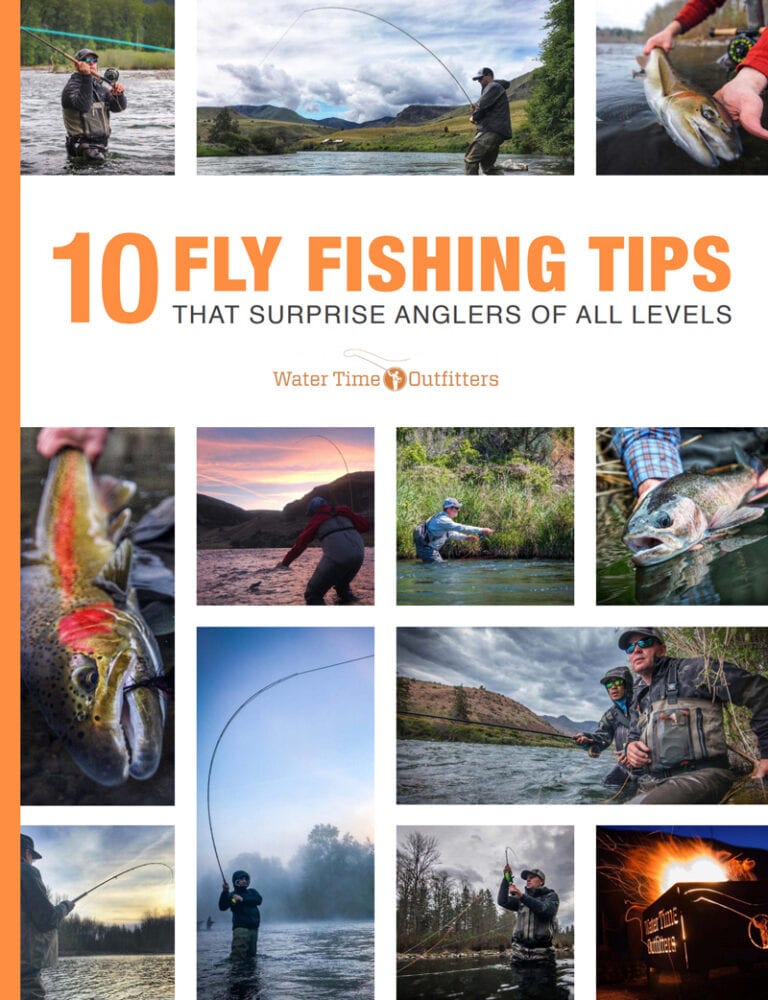Fly Fishing for Carp in Oregon

Oregon Fly Fishing for Carp
I’ve always considered myself a die-hard steelheader but when summer water temps have hit near lethal levels with our current drought fly fishing for carp has become a great option. Wet wading or casting from the boat for cruising fish that range from 10-25+ pounds is so much fun! While I won’t say I’ve got everything carp figured out, I have really enjoyed learning this new fishery. I have been impressed and surprised by the hard fighting nature of these fish and the sheer excitement of sight fishing for these golden monsters! Here’s a few things I’ve learned that will perhaps help you out. Give carp a try, I think your in for a treat!
Fishing for Common Carp in Oregon
When I first tried fly fishing for carp it was definitely a challenge; fish were cruising and trying to get them to eat my fly was another matter. After experimenting with numerous fly patterns it really became more apparent that my presentation was a big factor. Sight fishing is the best approach for carp. Spotting individual or groups of cruising fish, then casting to them is the main game. These fish often are on the move, cruising weed beds and shorelines. Carp eat numerous different morsels depending on where you are. Aquatic insects, small crustaceans, clams and worms are favorites. Often carp will be vigorously feeding on the bottom rooting out a meal from the muck. You’ll see murky areas of water indicating actively feeding carp. Watch the edges of this activity where you can pick off moving fish where you can see them. Polarized glasses are very helpful for carp fishing.
Seeing cruising carp and getting them to eat are two different things. Often wading along a shoreline you’ll find opportunities at carp. A boat will allow you a higher platform which makes spotting fish and positioning just right easier. Whether boat or bank, what I’ve had best success with is to cast within 3-4 feet of a cruising fish. Allow your fly to settle right in front or to the side of it. Sometimes a small twitch to get its attention. If the the fish tips down to eat, strip set and be ready to see your backing. This is not a time to try and stop a fish- let them run!
Fly fishing for carp is challenging and requires good accurate casting. It’s perfect for practicing your fish spotting, casting and hook setting for your next saltwater adventure like chasing bonefish on the flats. If your interested in a carp fishing adventure reach out to us at: [email protected]

Common Carp in Oregon- ODFW info
Features: Common carp are deep-bodied, heavy-looking fish with short heads and forked tails. They have large (really large) scales ranging from grey to bronze. Two barbels hang from each side of the upper lip of their subterminal (near the bottom of the head) mouth. This distinguishes them from goldfish that have no barbels. The dorsal fin is elongated.
Habitat: Though tolerant of most conditions, common carp prefer large bodies of slow moving or standing water with soft sediments like mud or sand, and good growths of aquatic vegetation. They’re omnivorous bottom feeders that prefer aquatic insects, worms, mollusks and zooplankton. But they will also occasionally feed at mid-water or even on the surface. As they root in the mud or sand to find food, they will also consume aquatic plants and algae, but the small animals attached to the vegetation are more important than the plants themselves.
Techniques: In deeper water, fish with bait under a bobber. Suspend bait so it’s near or on the bottom. Popular baits include canned corn and bread dough balls. Yummm. Carp will also take flies.
In shallower waters, try sight-fishing for cruising carp. This is a popular technique with fly-anglers and bow-anglers.
Common carp in Oregon: Common carp are highly invasive and have become naturalized in waterbodies throughout the state. They tolerate of a wide range of conditions – including warm and turbid water with low oxygen levels – and can live in a variety of river, lake and reservoir habitats.
Originally native to Asia, carp were introduced into the United States in the late 1800s from Europe, where they were and continue to be valued as a food and sport fish. Carp fishing has long been popular in many parts of this country.
Their success often comes at the expense of waterfowl, amphibians and other fish populations. As carp root in the muddy/sandy bottoms looking for food, they uproot aquatic vegetation and increase water turbidity. Their feeding also releases large quantities of sediment-bound nutrient that can lead to algae blooms that further deplete oxygen levels for other fish.
Ironically, while common carp are considered one of the most broadly distributed and invasive species in the United States, wild carp are considered at risk in their native habitats in eastern Europe and Asia.
If your interested in a carp fishing adventure reach out to us at: [email protected]

